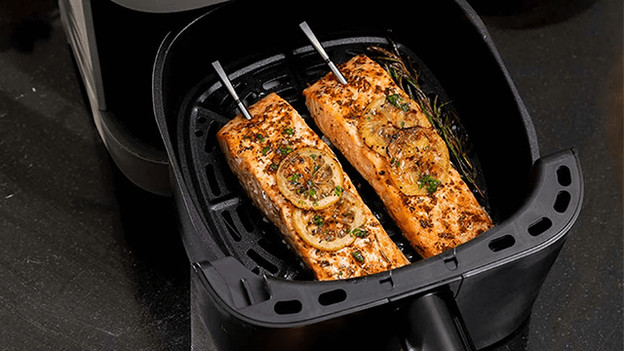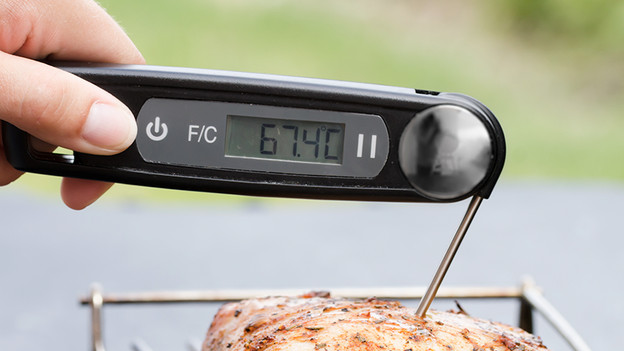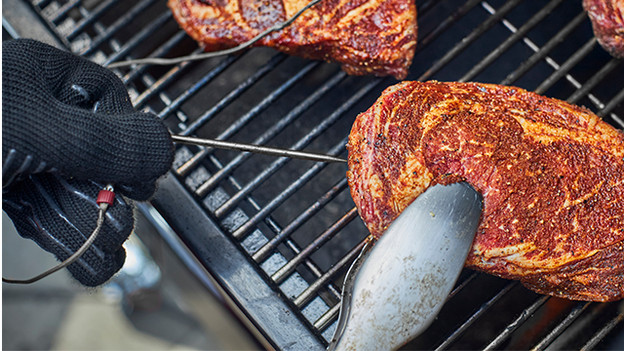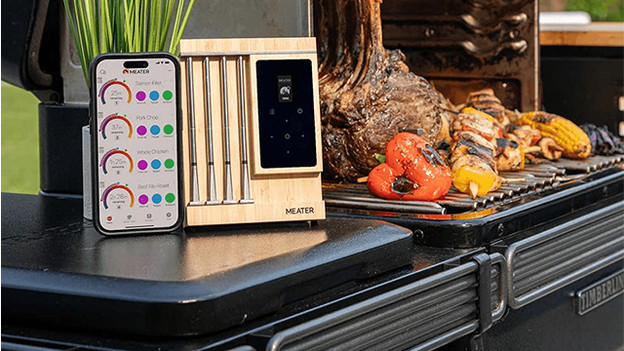
Written by Kelly
Edited on
24 June 2025
·
08:47
How do you use a BBQ meat thermometer?
Is the meat done or is it still too rare? Most barbecuers check if the meat is cooked by poking it a little and looking at the color on the outside. Some even put the meat back on the barbecue when they see it's not done yet after cutting it. Shame! The only way to determine if your meat is done is by using a meat thermometer when you're barbecuing. I'll tell you how to use a meat thermometer and will give you 4 tips.
Get started with a meat thermometer
- Place the pin correctly in the meat.
- Know the desired core temperature of the meat.
- Buy a wireless BBQ thermometer or one with a wire.
- Use of handy extra functions on your meat thermometer.

1. Correct placement of the pin in the meat
Make sure you insert the digital meat thermometer's pin or probe in the middle of the meat. Make sure not to place it too close to a piece of bone or fat. That would result in a less accurate measurement of the core temperature. If you're making a sirloin or a flank steak, insert the pin horizontally, and if you're making a whole chicken, insert it vertically. Insert the probe until you reach the core of the meat. That's the only way to know if the meat is cooking evenly.

2. Know the desired core temperature of the meat
The core temperature of a piece of meat is different than the barbecue's ambient temperature. The ambient temperature or grill temperature can easily reach 200 or 300°C. The correct core temperature differs per dish and preparation method. which is the correct core temperature for the correct doneness. In any case, it's a lot lower than the ambient temperature. If you want a medium-rare piece of meat, the ideal core temperature is around 50°C. For a well-done piece of meat, the temperature would be around 65°C.

3. Buy a wireless BBQ thermometer or one with a long connection wire
It's best to measure the core temperature when the ambient temperature in the barbecue is stable. That means you have to make sure as little hot air as possible escapes from the barbecue. You do so by barely opening the lid, or not opening it at all. That's why you should buy a meat thermometer with a longer wire or a wireless BBQ thermometer you can control via Bluetooth or WiFi. You can see the temperature without interfering with the meat and the barbecue's temperature.

4. Useful extra functions on your meat thermometer
Meat thermometers come in all shapes and sizes. There's the simple ones that only measure the core temperature, but there are also more extensive core thermometers with useful extra functions. For example, a timer function that triggers an alarm when the meat reaches the desired temperature. Another useful option is a thermometer that also measures the ambient temperature. You'll know exactly what's happening inside your barbecue.
Article by Kelly
Barbecue Expert.
